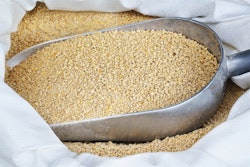
A layer feed based solely on corn as the cereal source results in egg yolk color of a yellow-orange hue that can be described as about 9 in the 1-to-15 Roche Scale. For most markets, this is sufficient. Others prefer a stronger hue, and to this end, up to 10 grams of supplemental xanthophyll per metric ton of feed are added. This gives a hue that is about 12+ in the Roche Scale, and it is mostly for the fresh egg market.
However, in practice, even such enriched diets often result in pale egg yolks and, in most cases, is neither a defective product (the pigment) nor a mixing error. There are several factors that affect the pigments available for egg yolk deposition.
1. Animal factors
Coccidiosis, especially for cage-free layers, is often blamed for reduced nutrient absorption, and this affects feed pigments as well. The same can be said for any other stress factors that affect nutrient absorption. Apart from diseases, heat stress is another such factor that causes a significant drop in egg yolk coloration.
2. Feed factors
Pigments are antioxidants, meaning they can be consumed by free oxidizing radicals. So, a feed rich in oxidized lipids will reduce the amount of available pigments for egg yolk coloration. To this end, using good quality lipids is of paramount importance. The same can be said about adding other antioxidants in the feed, one of them being extra vitamin E. Also, the presence of some mycotoxins has been associated with reduced egg yolk coloration.
3. Feed manufacturing
Fresh corn contains the full complement of its pigments. Corn stored for a year does not. As mentioned, pigments are antioxidants, and they tend to deteriorate. In fact, it has been shown that prolonged storage of corn can reduce pigment availability to about 50%. The same can be said about synthetic pigments that make up part of the vitamin and trace mineral premix. Some trace minerals are offensive oxidants and the can cause pigment deterioration. Storage of raw materials and products containing synthetic pigments under hot and/or humid conditions will reduce the availability of pigments. Conversely, it has been shown that natural antioxidants may help birds sustain heat stress better.

















